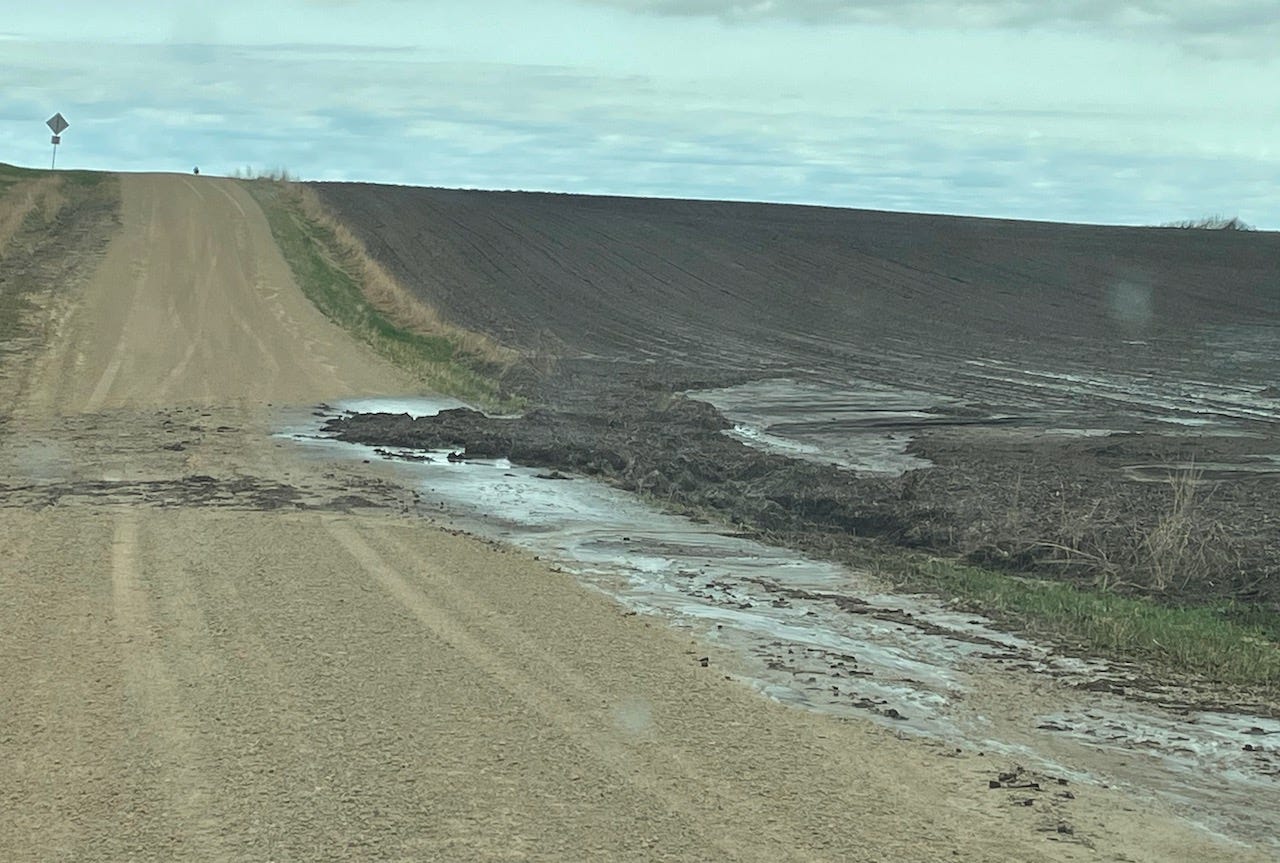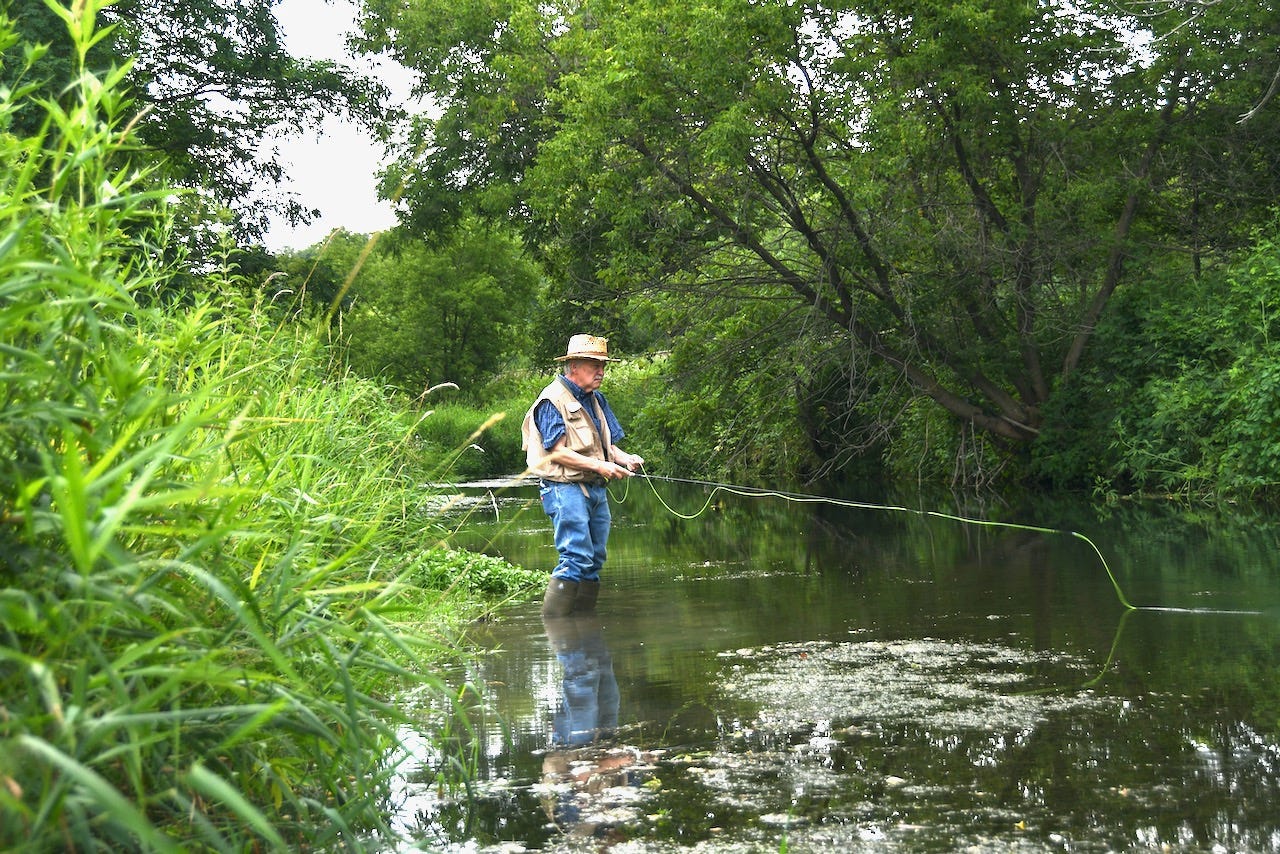The Future of Clean Water: Harkin on Wellness Symposium
No, I did not forget it is EARTH DAY!
It’s time to push back against the oligarchs and special interests who are blocking measures to improve Iowa’s water quality. That was the underlying message at a recent “Harkin on Wellness” symposium on The Future of Clean Water at the Harkin Institute at Drake University in Des Moines.
Iowa City attorney James Larew, registered agent for Driftless Water Defenders, a nonprofit clean water advocacy group, recalled the 1970s in Iowa as a time of political balance, with Republican Governor Robert Ray and Democratic leaders like Tom Harkin. Iowa became a model for the nation, with such measures as merit selection for judges, Congressional districts drawn by a nonpartisan legislative services agency, and collective bargaining for public employees.
“But there have been structural changes that have occurred in recent years that make the challenges more challenging,” Larew said, “ because of the rise of very powerful interests, economic and otherwise, whose power is not mitigated by any other structure.”
“I did not anticipate the rise of the oligarchs,” he said.
Larew envisions a new Civil Rights movement, including a constitutional amendment, to guarantee citizens the fundamental right to a clean environment.
Minnesota farmer and state legislator Rick Hansen, who worked in the Minnesota Department of Agriculture in the 1990s, said a formerly diverse and resilient farm economy has become monopolized by industrial interests. Lobbyists deny there are water quality problems.
In 2016, Minnesota passed a landmark, bipartisan law requiring a vegetative buffer of up to 50 feet between cropland and public waters. Although there is 99% compliance, some commodity groups seek to repeal the law.
“Even when you achieve something, there’s always reaction, a push-back,” Hansen lamented.
Mary Ward, an environmental and cancer epidemiologist, specialized in research on nitrates and agricultural pesticides in drinking water before her retirement from the National Cancer Institute. She said an Iowa City pediatrician in 1945 documented “blue baby syndrome” in infants whose formula was made with drinking water containing high levels of nitrate.
Other studies over succeeding years have shown an association with various cancers, birth defects, and thyroid problems from drinking nitrate-contaminated water. That’s led to federal standards that public water supplies contain no more than 10 mg/liter. However, some of the disease risks have shown up in people whose water contains even less nitrate.
The worst cases seem to be in agricultural areas served by private wells, which amount to about 10% of the U. S. population.
Liz Garst, co-founder of the Whiterock Conservancy, and a farmer and community banker from Coon Rapids, touted soil health as a major step toward better water quality. She said much of Iowa’s soil is “a pile of dust,” thanks to abuse, compaction, and erosion over more than a century – and especially with more recent transition to primarily two row crops.
That soil has almost no space between the particles to absorb water or oxygen, she explained. The soil may have the ability to soak up only ¼ to ½ inch of rain per hour, leading to runoff, erosion, and flooding. More healthy cropland can let in about 4 inches of rain per hour, Garst added, while a native prairie can absorb up to 13 inches per hour.
Healthy soil also supports about 2,000 pounds of living creatures per acre, Garst said. “But you’ve gotta feed those ‘bugs’ in the ground or they die.”
Conventional tillage farming “chops the bugs to smithereens,” she said. And what bugs are left must survive on an unhealthy diet of corn stubble. Heavy application of chemical fertilizers and pesticides further stresses the soil organisms.
“With corn and soybeans, for seven months of the year, about 75% of Iowa is completely sterile,” she said. “We’re not growing anything in the soil to feed the bugs.”
Planting cover crops, which keep growing roots in the soil after conventional crops are harvested in the fall and before they’re replanted in the spring, can help overcome those problems, Garst said.
Larry Baldwin, with the Waterkeeper Alliance in North Carolina, called livestock pollution there “a moral issue.” That state has the second most hogs in the country (behind Iowa!) As in Iowa, most are raised in concentrated animal feeding operations (CAFOs), although there currently is a moratorium on building new swine CAFOs in North Carolina.
Poultry CAFOs are becoming the new norm, after the state legislature barred the public from learning any information about the size or location of the operations. A large facility might have 48 barns, each housing 35,000 birds, producing four pounds of waste per bird, with a turnover of six flocks per year.
Many of the poultry and swine CAFOs are located in communities of color and low-income areas – communities who can’t fight back, Baldwin said. He called the situation a moral issue, “environmental racism.”
“It should be illegal that we’re forcing people to live in these conditions, and they have no recourse,” he said.
Baldwin recalled the mantra “We’re mad as Hell and we’re not going to take it anymore.”
“That’s where we’re trying to get North Carolina residents to be,” he said.
“Stand up and take your water back!”

Chris Jones, president of Driftless Water Defenders, concurred. “It’s time we admit the battle that we’re in,” he said.
“It’s time that we admit that the reason we have the environmental condition that we have here is there has been a conscious, deliberate, organized, and yes, sinister effort to deny Iowans a better quality of life, better air and better water, better and more parks, and the right to enjoy nature,” Jones said.
Jones retired from the University of Iowa in the face of Iowa legislators’ criticism of his controversial blogs pointing out industrial agriculture’s harm to the environment. He has continued his campaign with frequent speaking engagements, his Substack blog, and his book, “The Swine Republic: Struggles with the Truth About Agriculture and Water Quality.”
He read from a 1965 essay by the late Robert Sayre, who noted the euphemism “runoff” referring to the springtime load of diluted livestock dung and urine in the Iowa River.
“That was 60 years ago, yet here we are today talking about what is an eminently solvable problem,” Jones said. “It’s time we admit that the things that we have done over the last 60 years have not worked.
“Everything we come up with that we think is conciliatory to agriculture, and that they will go along with, it’s got a finite lifetime until things get inconvenient for them and then they want to kill it.”
“We hear all the time that ‘we all want clean water,’” Jones continued.
“But we only want clean water in the abstract – that’s what the industry wants.
They like the idea of it in the abstract – but if causes them any pain or inconvenience or money, they don’t like it anymore!”
Jones joked that the Driftless Water Defenders (DWD) should really be named Driftless Water Guerrillas. He noted the group’s mission to educate, advocate, and litigate.
“So yeah, we’re going to sue some people,” Jones said. “That’s the language that they understand – that’s the language the oligarchs understand. Courtrooms.”

He cited a lawsuit involving Supreme Beef, a 11,600-head cattle operation in the headwaters of Bloody Run Creek, an Outstanding Iowa Water in Clayton County. DWD also has contested a manure digester planned near Ridgeway, in Winneshiek County, with potential impacts on the watersheds of both the Turkey and the Upper Iowa Rivers.
Another action targets Agri Star in Postville, a meat and poultry processing plant that DWD alleges has been violating federal and state pollution regulations, leading to pollution of the Yellow River.
“Making nice with these people is not going to work,” Jones said. “We need to show some muscle – and say we’re not going to be pushed around anymore. We deserve the right to these natural resources. I would just urge you to gird for the fight,” he said.
Food and Water Watch Senior Organizer Michaelyn Mankel stressed the importance of organizing people in social movements. She cited past labor demands for fair wages, women’s suffrage, civil rights, anti-war, and environmental movements.
“There is a movement being built here in Iowa,” Mankel said. She gave the example of the April 5 “Hands Off” rally, during which about 5,000 people marched on the Iowa State Capitol.
“Working people have radically changed our country in the past,” she said. “The energy is serious. . . . I think that’s the only way to respond to the crisis we’re in now.”
Wally Taylor, attorney for the Iowa Sierra Club, cited a long list of environmental problems made worse by the political climate in both in Iowa and Washington. The Trump administration is trying to roll back a host of natural resources protections and regulations. In Iowa, Governor Kim Reynolds issued an executive order requiring the review of all agency administrative rules, and stating the revisions could not be more strict than existing rules.
“Elections have consequences,” Taylor said bluntly.
At the symposium, The Harkin Institute and the Iowa Environmental Council (IEC) announced a partnership to study the relationship between cancer risk factors and cancer rates in Iowa. Our state has the second-highest cancer rate in Iowa, and it one of only two states where cancer rates are increasing.
The project includes a review of academic literature and research, along with a statewide series of listening and community engagement sessions.
“The ultimate goal is to drive informed action toward policy and practices that improve human and public health,” said Sarah Green, executive director of IEC.
I’m privileged to be a member of the Iowa Writers’ Collaborative - a few dozen journalists who share our perspectives on Iowa. Most posts are free - but paid subscriptions are appreciated. Please check us out! (The full list of columnists is here.)







Thank YOU, Denise, for sticking with the battle over the years! I was too consumed with writing about the Harkin symposium to mention my connection to the first Earth Day in 1970. I was at the University of Michigan, which would be on spring break on April 22, so we held ours a week early. We were FIRST!
Spotlighting issues that are essential to our existence.
Note: Auto injury data is often used to advocate for new safety measures. It seems like there's untapped opportunity for water safety and heath insurers. People too often care after it's too late.